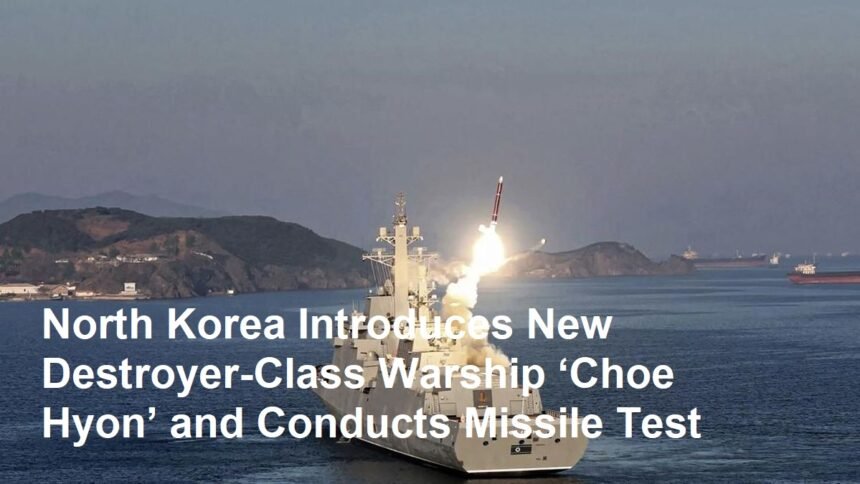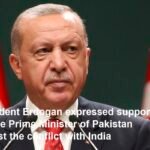North Korea has unveiled a significant advancement in its naval capabilities with the introduction of a new warship class named the Choe Hyon. This vessel, classified as a destroyer, reportedly displaces around 5,000 tons, marking a notable development in the country’s maritime military assets. Shortly after its unveiling, North Korea conducted a missile test from the new warship, signaling its intent to enhance its naval strike and defense capabilities.
Introduction of the Choe Hyon-Class Destroyer
The Choe Hyon-class destroyer represents one of the largest and most advanced surface combatants developed by North Korea to date. With a displacement of approximately 5,000 tons, the ship is considerably larger than many of the vessels previously operated by the Korean People’s Navy. The naming of the ship honors Choe Hyon, a prominent North Korean military figure and revolutionary hero, underscoring the symbolic importance of this naval asset.
The vessel is believed to be equipped with modern weaponry and sensor systems, including anti-ship missiles, surface-to-air missiles, and advanced radar and electronic warfare suites. The design suggests a focus on multi-role capabilities, enabling the ship to engage in surface warfare, air defense, and potentially anti-submarine operations.
Missile Test and Demonstration of Capabilities
Following the introduction of the Choe Hyon-class destroyer, North Korea conducted a missile test launched from the vessel. While specific details about the missile type remain limited, the test is understood to demonstrate the ship’s ability to deploy advanced missile systems, enhancing its offensive reach and deterrence posture.
The missile test serves multiple purposes: validating the operational readiness of the new warship, showcasing North Korea’s growing technological prowess, and sending a strategic message to regional and global actors about its expanding military capabilities.
Context of North Korea’s Naval Modernization
North Korea’s naval forces have traditionally been composed of smaller, older vessels with limited blue-water capabilities. The introduction of the Choe Hyon-class destroyer marks a shift toward developing larger, more capable surface combatants that can operate beyond coastal waters.
This development aligns with North Korea’s broader military modernization efforts, which include advancements in missile technology, submarine capabilities, and asymmetric warfare tactics. The country’s leadership has emphasized strengthening its military deterrent amid ongoing tensions with South Korea, the United States, and their allies.
Regional and International Reactions
The unveiling of the Choe Hyon-class destroyer and the subsequent missile test have drawn concern from neighboring countries and the international community. South Korea’s military has closely monitored the developments, viewing the new warship as a potential threat to regional maritime security and stability.
Japan and the United States have also expressed apprehension, emphasizing the need for vigilance and continued pressure on North Korea to curb its military provocations. The missile test, in particular, is seen as a provocative act that could escalate tensions in the already volatile Korean Peninsula.
International bodies, including the United Nations, have reiterated calls for North Korea to comply with existing sanctions and engage in diplomatic efforts to denuclearize and reduce military tensions.
Strategic Implications
The Choe Hyon-class destroyer enhances North Korea’s ability to project power in regional waters, potentially challenging the naval dominance of South Korea and its allies. The ship’s missile capabilities increase the risk of maritime confrontations and complicate defense planning for neighboring countries.
Moreover, the development signals North Korea’s intent to diversify its military assets and reduce reliance on land-based missile systems by incorporating naval platforms into its strategic deterrent.
Conclusion
North Korea’s introduction of the Choe Hyon-class destroyer, coupled with the missile test conducted from the vessel, marks a significant milestone in the country’s naval modernization program. This development reflects Pyongyang’s ongoing efforts to bolster its military capabilities amid persistent geopolitical tensions.
While the full operational capabilities of the new warship remain to be seen, its emergence underscores the evolving security dynamics in Northeast Asia. The international community continues to watch closely, balancing concerns over regional stability with efforts to engage North Korea diplomatically.









